PE film recycling r-PET – Will hydrogen cars be important competitors to electric cars? 12-08-2023 - Arhive
PE film recycling r-PET
Indorama Ventures Elevates PET Recycling Capacity in Brazil to 25,000 Tons/Year
Indorama Ventures, a prominent petrochemical heavyweight headquartered in Bangkok, Thailand, has recently concluded a remarkable expansion endeavor at its polyethylene terephthalate (PET) recycling facility in Brazil. This transformational undertaking has catapulted its recycling capacity nearly threefold, soaring from an initial 9,000 tons per annum to an impressive 25,000 tons per annum. The facility, strategically located in Juiz de Fora within the Minas Gerais state, will now be responsible for generating 25,000 tons annually of polyethylene terephthalate (PET) crafted from post-consumer recycled materials. This substantial enhancement resonates powerfully in light of PET’s standing as one of the most extensively recycled plastics globally. Its ascendancy is attributed to its inherent qualities of recyclability, adaptability, safety, and lightweight attributes, all of which significantly contribute to sustainable growth. PE film recycling r-PET
The visionary transformation executed by Indorama Ventures materialized through an investment of $20 million, aimed at refining the recycling facility’s operations. Nestled in the southeastern Brazilian state of Minas Gerais, the facility’s optimizations encompassed procedural streamlining and the integration of state-of-the-art washing machines. These advanced machines play a pivotal role in the removal of labels, the comminution of bottles submerged in water, and a remarkable 70% reduction in water consumption.
This impressive investment endeavor received vital backing in the form of a Blue Loan from the International Finance Corporation (IFC), a crucial entity within the World Bank framework. This financial infusion is a facet of a broader blue finance initiative initiated in November 2020, wherein Indorama Ventures secured $300 million in funding. This strategic initiative revolves around amplifying recycling capacities while diverting plastic waste from landfills and oceans. The focus regions include Thailand, Indonesia, the Philippines, India, and Brazil—nations grappling with the complex challenges of mismanaged waste and the dire menace of plastic pollution plaguing marine ecosystems.
Expressing his satisfaction, DK Agarwal, Deputy Group CEO of Indorama Ventures, noted, “It is extremely gratifying to leverage the IFC’s generous funding to invest in important projects that build on Indorama Ventures’ industry leadership in sustainability.”
He further acknowledged the IFC’s pivotal role in reinforcing Brazil’s prominence as a sustainability leader and commended the institution’s recognition of the company’s recycling endeavors. PE film recycling r-PET
Indorama Ventures has successfully harnessed a cumulative sum of $2.4 billion in long-term sustainable financing between the years 2018 and 2022 from diverse financial institutions. This substantial funding has been instrumental in propelling a range of sustainability-driven initiatives. One pivotal commitment is the allocation of $1.5 billion to realize an ambitious objective: augmenting the recycling capacity to a remarkable 50 billion PET bottles per year by 2025. This monumental stride will supersede the present annual benchmark of 30 billion bottles, equating to a staggering 495,000 tons. The trajectory continues as the company plans to channel another billion towards elevating this target to an astounding 100 billion by the year 2030.
Indorama Ventures entered the arena of PET recycling in 2011, a move that sparked a transformational journey. This innovative endeavor pivots on the conversion of post-consumer PET bottles into an array of end products, including flakes, rPET resins, and recycled polyester yarns. PE film recycling r-PET
The company’s footprint extends across multiple countries, with recycling facilities operational in key regions such as Mexico, the United States, Brazil, Ireland, France, the Netherlands, Poland, Thailand, and the Philippines.
In sum, Indorama Ventures’ momentous expansion of its PET recycling facility in Brazil serves as a beacon of sustainability within the global petrochemical landscape. This initiative not only significantly amplifies the company’s recycling capacity but also underscores its unwavering commitment to driving transformative change in the fight against plastic waste and environmental degradation.
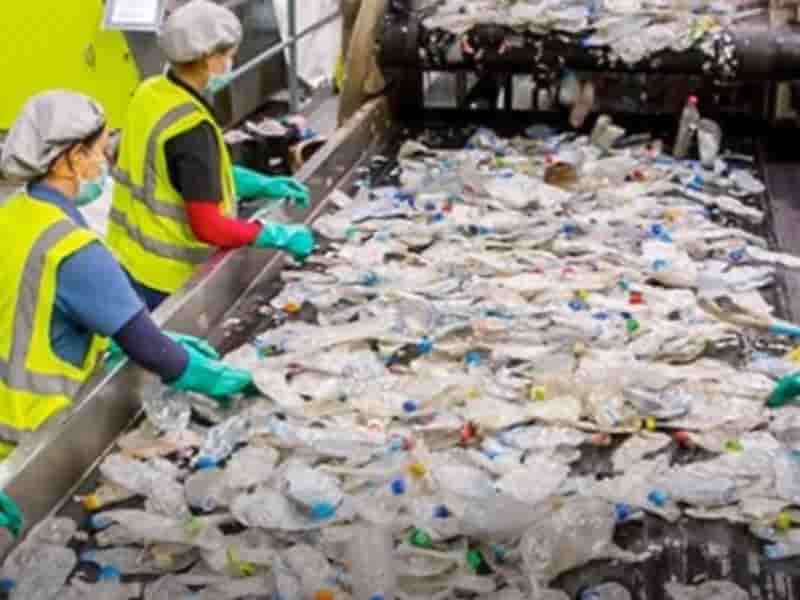
Air Liquide and LOTTE Chemical Deepen Hydrogen Collaboration in South Korea
Air Liquide and LOTTE Chemical are solidifying their collaboration in the hydrogen sector by expanding their presence in various hydrogen-related markets, including ammonia decomposition, liquefied hydrogen, and hydrogen shipping, in the city of Yeosu, South Korea.
Through the formalization of a Memorandum of Understanding (MoU), the two companies are poised to explore the utilization of clean ammonia imports from overseas as a source for hydrogen production, catering to both power generation and mobility applications. This strategic alliance aims to capitalize on the growing interest in clean energy and hydrogen-based technologies. PE film recycling r-PET
An integral part of this enhanced partnership is the expansion of the joint venture between LOTTE and Air Liquide, known as LOTTE-Air Liquide Ener’Hy, which was established in December 2022. This joint venture initially concentrated on gaseous hydrogen, but will now broaden its focus to encompass both liquefied hydrogen and gaseous hydrogen, further strengthening its position in the evolving hydrogen market.
One of the initial projects under this extended collaboration involves the development of a cutting-edge hydrogen shipping center. This center will utilize by-product hydrogen derived from the operations at LOTTE Chemical’s Daesan plant, demonstrating a sustainable approach to hydrogen supply chain management. The launch of this project is scheduled for the latter half of 2024, showcasing the commitment of both companies to timely and impactful innovation.
Hwang Jin Koo, the CEO of LOTTE Chemical’s Hydrogen Business, emphasized that this expanded cooperation is not only aligned with the global shift towards clean energy, but also plays a pivotal role in promoting the hydrogen and ammonia economy. By fostering such collaboration, both companies aim to contribute significantly to carbon neutrality efforts, simultaneously advancing their own strategic goals.
Hwang Jin Koo further elaborated on LOTTE Chemical’s dedication to the hydrogen ecosystem. He highlighted the company’s strengths in production, distribution, utilization, and technology development, which will be leveraged to ensure the successful establishment of hydrogen-related initiatives. Moreover, the collaboration will strengthen the global network of both Air Liquide and LOTTE Chemical, positioning them as prominent players in the global hydrogen market. PE film recycling r-PET
LOTTE Chemical’s strategic vision extends beyond national borders, as it seeks to stimulate the implementation of clean hydrogen and ammonia on an international scale. The company plans to achieve this by fostering investments and partnerships that align with their commitment to clean energy. This proactive approach demonstrates LOTTE Chemical’s anticipation of increased global demand for sustainable energy solutions.
In a recent development earlier this month, plans emerged for the establishment of a 30MW green hydrogen production facility in Jocheon-eup, located in Jeju City, South Korea. This announcement came shortly after the provincial government received recognition from the Ministry of Trade, Industry, and Energy to lead in technological advancements and pilot projects for clean hydrogen production.
As the world shifts towards greener energy alternatives, partnerships such as the one between Air Liquide and LOTTE Chemical hold immense significance. By collaborating to expand their presence in the hydrogen sector, both companies are actively contributing to a sustainable energy future while fostering economic growth and technological innovation in South Korea and beyond. PE film recycling r-PET

New partnership for recycling PE film
Fastenal and Trex have entered into a scrap supply agreement which is expected to divert an estimated 600,000 pounds of plastic from landfills in the first year of operations.
Fastenal, a U.S.-based industry supplier, and wood-alternative decking company Trex have announced a partnership that will see Trex repurposing Fastenal’s discarded polyethylene (PE) stretch film. PE film, widely used in logistics, stabilises products on pallets to make them safe for transport. It also serves as a protection against external influences such as dust, dirt, or moisture, and helps prevents theft of the goods.
Through the partnership, Fastenal is collecting used PE film in its distribution centres, branches, and customer-specific onsite locations and shipping it to Trex to use the material in the manufacture of composite decking products.
The entire portfolio of Trex’s composite decking is made from 95% recycled and reclaimed materials, including a mix of PE film, known as pallet wrap in the distribution industry, and industrial wood scrap. PE film recycling r-PET
“Pallet wrap is vital to our daily operations, but once the product is unwrapped, we have no use for it,” said Dave Olson, director of EHS & Sustainability for Fastenal. “Working with Trex to turn all that potential waste into sustainable outdoor building products is a win for both organisations.”
As Fastenal receives high volumes of pallet wrap as part of inbound shipments from its suppliers, it expects to divert an estimated 600,000 pounds of plastic from landfills in the first year of the programme alone. The company said it invested more than $300,000 in equipment and infrastructure in its United States distribution centres to bale and consolidate used PE film that it then ships to Trex for recycling.
The global pallet wrap market is estimated at $6.14 billion in 2023 and is expected to grow 4% every year to $9.12 billion in 2033, analysis by Future Market Insights indicates. In North America, the market grew by of an average of 3.1% every year from 2018 to 2022. The PE film is used in huge volumes by logistics companies, among others, and more often than not ends up in landfill. PE film recycling r-PET
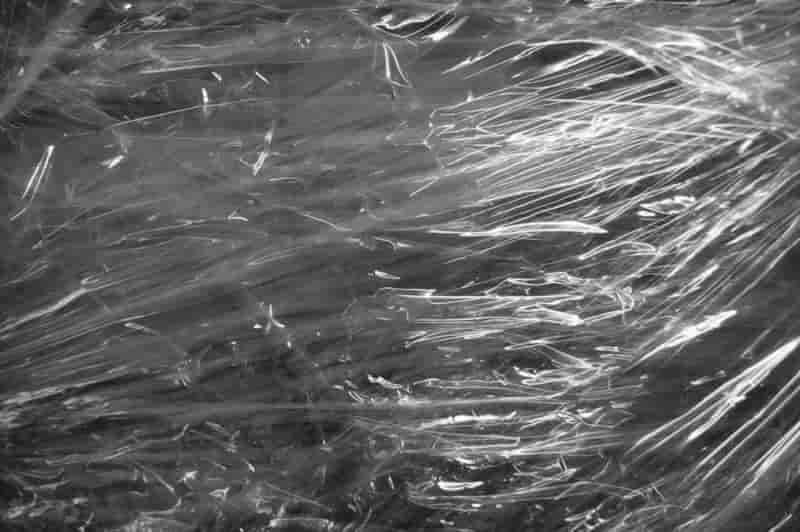
Dutch Scientists Challenge Prevailing Assumption: Over 60% of Ocean Plastic Resides on Surface
In a groundbreaking revelation, researchers from the University of Utrecht in the Netherlands have upended existing perceptions regarding the distribution of plastic in the world’s oceans. Contrary to the long-held belief that a mere 1% of plastic debris floats on the ocean’s surface, these scientists have unveiled a new numerical model that paints a starkly different picture of plastic distribution. Their findings, detailed in a report by Sustainableplastics, underscore the urgent need for a comprehensive reevaluation of our understanding of marine plastic pollution.
The conventional assumption, propagated through multiple estimations, had perpetuated the notion that the majority of plastic waste entering the oceans sank to the depths, while only a minute fraction remained afloat. However, the University of Utrecht researchers, armed with their innovative 3D global marine mass budget model, embarked on a mission to uncover the hidden truths beneath the surface of this issue. Their research, shared through a publication titled “Global mass of buoyant marine plastics dominated by large long-lived debris” in the esteemed journal Nature Geoscience, has brought new clarity to this persistent environmental problem. PE film recycling r-PET
Spanning the time frame from 1980 to 2020, the researchers’ numerical model cast a wide net, capturing data on plastic in various oceanic locations: surface waters, coastal beaches, and the ocean’s depths. What sets their model apart from predecessors is the meticulous inclusion of a diverse array of variables. These encompassed the intricate interplay between plastic’s movement, including its shoreline deposition, fragmentation into smaller particles, and colonization by algae, which renders it denser and causes it to eventually sink to the ocean floor. This comprehensive approach incorporated a record number of measurements and observations, elevating the credibility of their findings.
In an astonishing departure from established beliefs, the researchers found that an overwhelming proportion of plastic mass hovers near the ocean’s surface, accounting for an astonishing 59% to 62% of the total. This starkly contradicts the previous assumption that only a negligible fraction of plastic debris resided on the surface. This revelation lends substantial support to the emerging notion of a “missing sink” of marine plastic pollution, long suspected but now quantified with a degree of certainty.
The most astounding revelation, however, pertains to the sheer volume of buoyant marine plastic litter. While prior estimations had consigned this figure to a much lower range, the University of Utrecht’s research unveiled a staggering reality: the actual quantity lies within the range of 3,000 to 3,400 kilotons.
Such an extensive magnitude underscores the gravity of the issue and underscores the inadequacy of earlier assessments. PE film recycling r-PET
Moreover, the study dismantles preconceived notions about the composition of this plastic mass. Contrary to assumptions that plastic waste predominantly consists of fragmented particles, the researchers found that large plastic items constitute the lion’s share of this debris, constituting a staggering 90% to 98% of the total buoyant plastic mass. This observation shatters the common misperception that microplastics are the primary agents of marine pollution, directing the spotlight onto larger plastic items that remain in plain sight.
In the broader context of global plastic consumption and waste management, this paradigm-shifting research reverberates with implications. Industries, policymakers, and environmentalists must collectively confront the extensive presence of buoyant plastic waste on the ocean’s surface, necessitating novel strategies for both mitigation and cleanup. The study’s innovative methodology and meticulous data compilation set a new standard for accurate plastic pollution estimation, guiding us towards a more profound understanding of this pressing issue. PE film recycling r-PET
As the world grapples with escalating concerns about plastic pollution’s far-reaching consequences, endeavors like the joint initiative between ALPLA and PTT Global Chemical (GC) assume even greater significance. The introduction of Thailand’s inaugural food-grade recycled PET (rPET) to the market signals a pivotal step towards sustainable plastic usage. These efforts underscore the urgency of reimagining our relationship with plastic, with initiatives embracing both recycling and reduction in consumption forming crucial components of the collective fight against the ocean’s plastic plague.
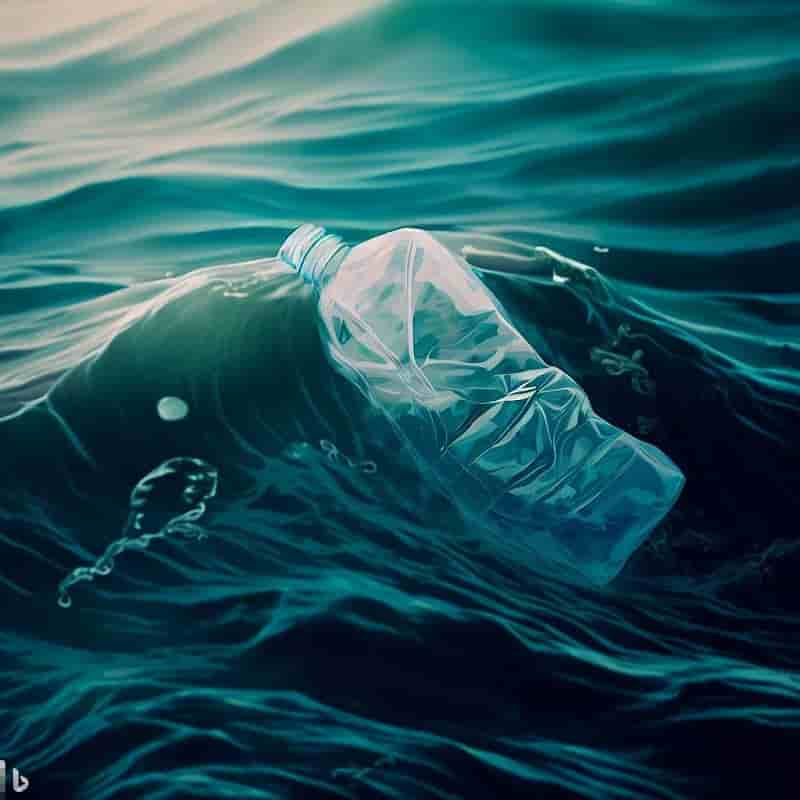
BMW’s Battery Strategy: Pioneering Battery Tech, Lithium Iron Phosphate, and the Future of Solid-State Batteries
BMW places paramount importance on advancing battery technology, evident through its battery technology roadmap. A focal point in this journey is the integration of lithium iron phosphate and the pursuit of solid-state batteries.
The cornerstone of BMW’s approach lies in the meticulous study of battery fundamentals, with the critical question being the optimal timing for widespread production. Emblematic of this vision is BMW’s ambitious plan to manufacture a minimum of 10 million electric vehicles over the next decade. By 2030, each vehicle will slash its carbon emissions by half during operation and curtail its carbon footprint by 40% over its entire lifecycle. Notably, the target for secondary materials usage has been elevated to 50%.
At the heart of this strategy lies the battery cell, a linchpin for BMW’s future success. Crucial metrics for evaluating battery performance encompass lifespan, charging speed, driving power, and cost-efficiency. Astonishingly, the battery pack constitutes 40% of the vehicle cost, composed of 80% for the battery cell and 20% for module and system expenses. Within the cell cost, the material expense accounts for 80%, while manufacturing costs comprise the remaining 20%.
BMW’s comprehensive battery research spans the spectrum from basic principles to module-level applications. Encompassing rudimentary working principles, materials exploration, electrode/component development, and battery cell enhancement, this research envisions long-term prowess. PE film recycling r-PET
BMW’s journey into battery technology commenced in 2008, when lithium batteries were first investigated for the i3 and i8 models. Subsequently, in 2012, a dedicated battery cell technology research endeavor was initiated, culminating in the establishment of the BMW Battery Cell Competence Center in 2019. A pivotal milestone was reached in 2020 with the inception of a trial production line near Munich’s Parsdorf base, set to conclude in 2022.
The collaborative approach to innovation is underscored by BMW’s commitment to early research and process validation, a collaborative venture with supplier partners. With over 300 R&D specialists and 43 ongoing projects, robust cooperation is fostered across academic institutions, universities, corporations, original equipment manufacturers (OEMs), and various sectors. Laboratory exploration encompasses material characterization, chemical system evolution, formulation refinement, performance and safety assessments, and failure analysis.
Parallel to battery trial production, BMW and its partners are jointly constructing a prototype battery production line at the Parsdorf facility. PE film recycling r-PET
BMW’s stance emphasizes the entire value chain and lifecycle, encompassing raw material procurement, refining, battery material production, quality classification, battery cell innovation, battery cell manufacturing, research and development of battery modules and systems, testing, repurposing, decomposition, and raw material recycling. The company sources cobalt and lithium ores from certified mines in Australia and Morocco, alongside materials from secondary utilization.
Strategic battery system development is shaped by technical prerequisites and regulatory imperatives, harmonizing design, safety, and sustainability. Regarding design, the trajectory points toward heightened integration for greater volume energy density, transitioning from cell-to-pack (CTP) and battery-to-chassis (CTC) integration.
Safety standards, rooted in Chinese legislation, are aimed at achieving no fire and explosion within five minutes. Future endeavors envisage extending this parameter to 40 minutes while prioritizing flame resistance. Sustainability, presently lacking compulsory regulations, is being addressed proactively, with impending EU directives on carbon emissions, raw material recycling, and recycling rates. PE film recycling r-PET
BMW’s battery technology roadmap pivots on striking a balance between high performance and cost-effectiveness, ultimately pivoting toward solid-state batteries. Within the cost-controlled trajectory, the initial stage pursues cobalt-free cells, with the subsequent phase targeting both cobalt-free and low-nickel variants, such as lithium-rich manganese-based batteries. In the realm of high-performance, a high-nickel approach is adopted, envisioning the incorporation of silicon oxide/graphite hybrids and, subsequently, high-silicon anodes, like silicon carbide compounds.
Currently, BMW stands at the crossroads between cost-controlled and high-performance routes. Additionally, lithium iron phosphate batteries offer an affordable solution for entry-level vehicles, owing to their cost efficiency.
Reflecting on material and battery evolution trends:
- Anode materials span from graphite (360 mAh/g) to graphite/silicon oxide mixtures (500-600 mAh/g) and silicon carbide compounds (1200 mAh/g).
- Cathode materials evolve from NMC111 (150 mAh/g) to NMC532,622 (180 mAh/g), NMC811 (210 mAh/g), and high-nickel variants (230 mAh/g, Ni content exceeding 90%). PE film recycling r-PET
Risks in material evolution encompass the stability of high-performance components reliant on nickel content and the dominance of silicon anodes in cost. Material application must align with electrode and cell design trends.
Electrode design shifts hinge on enhanced compactness and optimized coating, while battery core design envisions increased cell capacity through laminate configurations, augmented packing density, thinner diaphragms, and the manufacturing of larger batteries.
Envisioned as a transformative technology, all-solid-state batteries are on the horizon. The current generation features NMC positive electrodes, graphite silicon negative electrodes, liquid electrolytes, and porous separators. Future iterations will incorporate NMC positive electrodes, lithium metal negative electrodes, and oxide/polymer/sulfide solid electrolytes.
This transition to solid-state confers heightened safety through solid electrolytes and augmented energy density via lithium metal. Nonetheless, challenges remain, including interface stability, thermal management diversities, lithium metal energy fluctuations during charge and discharge cycles, rated capacity for lithium metal, and material resilience in manufacturing and usage contexts. PE film recycling r-PET
Given the advantages and challenges inherent to solid-state batteries, their potential in bolstering safety and energy density is substantial. However, their cost-effectiveness is still an uncertainty, necessitating thorough proof of concept before industrialization can be realized.

Revolutionizing Plastic Recycling: Innovative Approaches for Upcycling Polyethylene and Polypropylene Plastics
In a groundbreaking contribution to sustainable waste management, two recent studies have unveiled novel techniques to convert commonly discarded plastics – polyethylene (PE) and polypropylene (PP) – into valuable chemical products, ushering in a new era of circular plastics economy. These pioneering approaches not only address the mounting plastic pollution crisis but also offer a means to synthesize high-value chemicals in an environmentally conscious manner. PE film recycling r-PET
Plastic waste, a mounting global challenge, has spurred researchers to seek innovative ways to transform its negative impact into a positive solution. Among the myriad types of plastics, polyolefin plastics, exemplified by PE and PP, constitute a staggering 60% of the world’s plastic production. However, their resilience poses a substantial obstacle to reverting them back to their constituent monomers, limiting their recyclability. Addressing this issue, Houqian Li and their team have demonstrated a transformative method for converting waste polyolefin plastics into olefins through thermal depolymerization reactions, such as pyrolysis.
Traditionally, the production of olefins necessitates energy-intensive processes reliant on fossil fuel feedstocks like natural gas and crude oil. Li et al. have harnessed pyrolysis to generate olefin mixtures from discarded PE plastics, which can be subsequently converted into aldehydes. These aldehydes, in turn, serve as a precursor to highly valuable oxygenated chemicals including alcohols and diols. This innovation not only circumvents traditional resource-intensive practices but also underscores the potential of plastic waste as a rich source of feedstock for essential chemical compounds.
In a parallel endeavor, Zhen Xu and their collaborators have introduced a method to transform PE and PP plastics into fatty acids, a cornerstone of numerous commercially significant surfactants and detergents. PE film recycling r-PET
The crux of their technique lies in meticulously controlling temperatures during the heating process of polyolefin plastics. By deftly avoiding violent pyrolysis reactions and volatile vaporization, Xu et al. sidestep the conventional challenges of free-radical chemistry associated with plastic degradation. This precision results in the creation of waxes from the polyolefin plastics, which can then undergo oxidation and saponification processes to yield valuable fatty acids. These fatty acids serve as a versatile precursor to a spectrum of high-value surfactants, amplifying the economic and ecological potential of plastic upcycling.
In the broader context of sustainable waste management, these innovative methodologies hold the promise of propelling the concept of a circular plastics economy from vision to reality. Kevin Van Geem, in an accompanying perspective, aptly highlights the transformative potential of these advancements, emphasizing their role in establishing a closed-loop system for plastic recycling.
The urgency of tackling the plastic pollution crisis has been underscored by a July 2021 Special Issue of Science, which spotlighted the escalating plastic pollution dilemma and featured a review focusing on the pivotal role of recycling innovation and polymer upcycling in advancing the cause of closed-loop plastic recycling.
In conclusion, the recent strides in plastic upcycling, particularly the conversion of PE and PP plastics into high-value chemical products, stand as testament to the power of scientific innovation in addressing pressing global challenges. PE film recycling r-PET
These ingenious approaches not only offer a pathway to diminish plastic waste but also exemplify how discarded materials can be harnessed to create economic value while promoting environmental sustainability. As the world grapples with the consequences of plastic pollution, these studies illuminate a hopeful trajectory toward a cleaner, more responsible future.
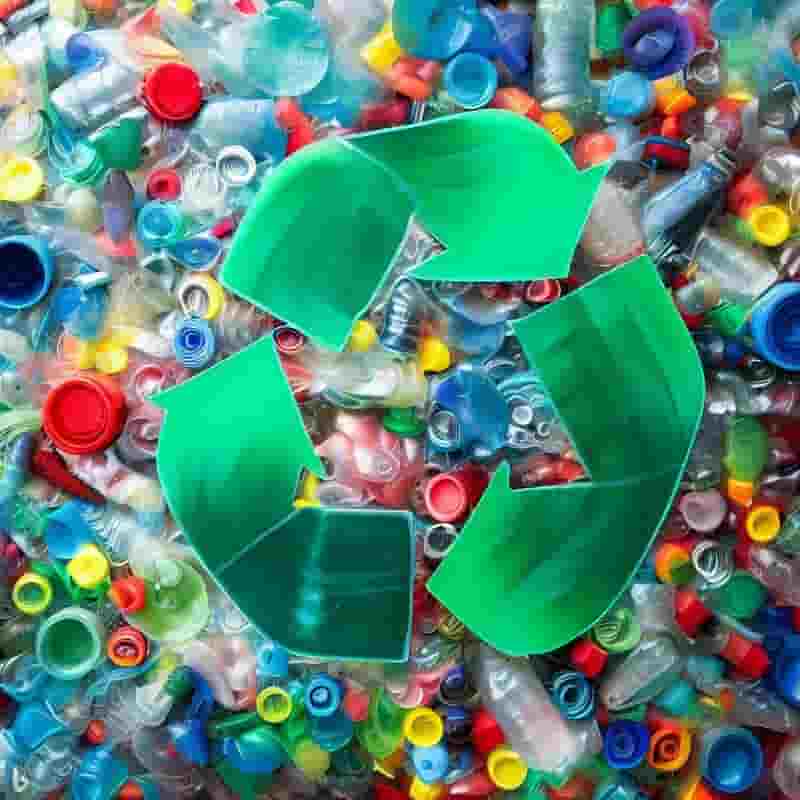
Concerns Arise as China Floods Indian Markets with Cheap Fiber Ahead of Quality Control Order
The impending implementation of a quality control order (QCO) on various textile input materials has raised concerns within the Indian textile industry. Chinese exporters are reportedly flooding the Indian market with inexpensive fiber and polyester in anticipation of the QCO, which is scheduled to take effect on October 1st. Brij Mohan Sharma, the Joint Managing Director of Rajasthan Spinning & Weaving Mills, expressed the industry’s apprehensions regarding this situation. PE film recycling r-PET
While larger players in the textile sector have welcomed the QCO as a means to enhance quality and competitiveness, micro, small, and medium enterprises (MSMEs) are facing challenges due to their reliance on imported raw materials and the potential impact of the impending standards. Sharma highlighted that China is aggressively dumping subpar quality fiber products into the Indian market at prices lower by ₹5-7 per kilogram compared to domestically produced polyester fiber. This move is seen as an attempt to capitalize on the time gap before the QCO comes into force. Those operating within the commodity segment, lacking dedicated supply chains, are expected to bear the brunt of this strategy.
Sharma emphasized the importance of the value addition brought about by the quality control order, particularly when it comes to improving the overall quality of textiles. He revealed that discussions have been initiated with the Ministry of Textile to address the industry’s concerns and mitigate potential negative impacts.
In light of the situation, experts are urging policy makers to pay attention to the cotton value chain, a cornerstone of the Indian textile industry. Despite being one of the world’s largest cotton producers, India is facing a risk of becoming a net importer of cotton. This looming challenge arises from a combination of factors, including record declines in both cotton exports and production during the current financial year. The ongoing Ukraine conflict has led to weak demand for textile products in Western markets.
The US Department of Agriculture (USDA) has projected that India’s cotton exports will hit a 19-year low during the crop season spanning from October 2022 to September 2023. The expectation is that farmers will shift their focus to more profitable crops like oilseeds and pulses, leading to a further reduction in cotton output. PE film recycling r-PET
Against this backdrop, Indian cotton yarn exports have plunged to a decade-low of 664,000 tonnes in the fiscal year 2022-2023. Sharma called for a balanced approach, highlighting that the government’s emphasis on garments and technical textiles should not overshadow the core competency of the Indian textile industry – cotton. He acknowledged the importance of systematic export promotion but cautioned against neglecting the integral role that cotton plays in India’s textile landscape.
Sharma also raised concerns about the volatility of cotton prices, emphasizing that drastic fluctuations – such as the jump from ₹55,000-65,000 per candy to ₹1 lakh – negatively impact the industry’s stability. This price volatility has affected not only cotton but also other materials like viscose and fiber. PE film recycling r-PET
Despite these concerns, queries directed to the textile ministry have gone unanswered, leaving industry players and stakeholders awaiting further clarification and guidance regarding the impending quality control order and its potential implications on the sector.
In conclusion, the Indian textile industry is grappling with the influx of low-quality fiber from China in advance of the upcoming quality control order. While the order is expected to enhance the quality and value addition of Indian textiles, the challenges faced by MSMEs and the potential implications on the cotton value chain are areas of concern that require careful consideration and timely intervention from policymakers.
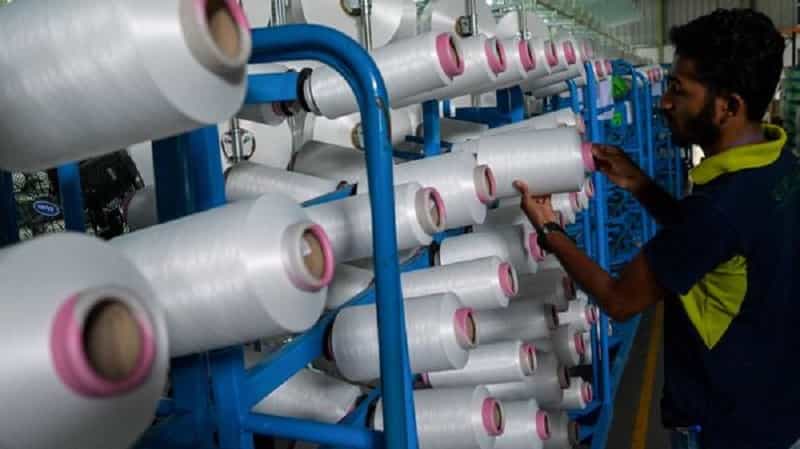
PE film recycling r-PET
